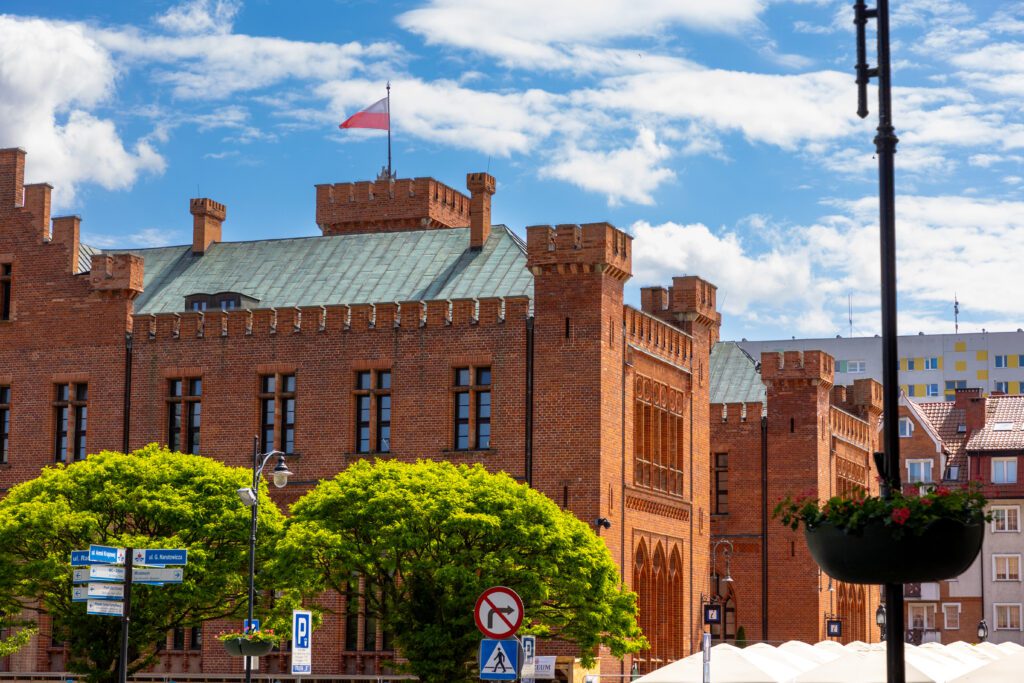Constructed in the Neo-Gothic style from 1829 to 1832 based on a design by Karl Friedrich Schinkel, this building stands on the site of an older town hall that was destroyed in 1807 during the siege of the city. It underwent a minor modernization in 1913.
Despite the intense bombings of the city center during the Battle of Kołobrzeg in 1945, the building was not destroyed. After World War II, it served as the location for various institutions. It currently houses the Contemporary Art Gallery, a Tourist Information Center, and the Civil Registry Office.
This two-story building is shaped like the letter C and was constructed on foundations dating back to the 15th century. Its central courtyard originally held a monument to King Frederick William III, later replaced by an honorary tribune.
The building resembles a medieval defensive castle, adorned with turrets and battlements. The centrally placed tower is decorated with a clock and the coats of arms of Kołobrzeg and Poland. The historic clock, removed in 2014, is now displayed in the Patria Colbergiensis Museum.
From the northeast side, on the ground floor, architectural elements from the medieval town hall have been preserved. Among the pillars that support the building’s risalit is a 16th-century pillory known as the Adebar Column. Carved into its capital is a mask associated with the legend of the Kołobrzeg mayor, Jakub Adebar.

